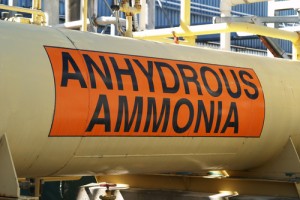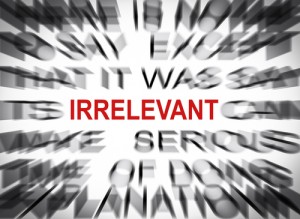December saw two posts about the depressing demise of TRIA, so we thought we’d end the year on a considerably lighter note. FacesOfLawsuitAbuse.org is a U.S. Chamber of Commerce project that addresses this country’s litigation explosion, and it publishes a list of the ten most ridiculous lawsuits at the end of every year. While none of this year’s finalists involve insurance coverage per se, we thought that we still would share them with our readership. Some of last year’s – such as the man who sued Apple because he allegedly became addicted to pornography after “accidently” visiting an adult website on an Apple device or the criminal who sued eight brewers for not warning him that alcohol, which supposedly led to his life of crime, was “habit forming and addictive” – were arguably funnier. This year’s crop nonetheless contains some howlers. Read on – and may each and every one of you have a happy, healthy, and prosperous 2015!
 (1) A man who fell asleep during Red Sox game at Yankee Stadium filed a lawsuit against ESPN and its announcers as well as Major League Baseball and the Yankees after he was shown napping on a live telecast of the game. According to his complaint, he suffered “substantial injury” to his “character and reputation” and “mental anguish, loss of future income and loss of earning capacity” as a result of the incident. His complaint seeks $10 million in damages.
(1) A man who fell asleep during Red Sox game at Yankee Stadium filed a lawsuit against ESPN and its announcers as well as Major League Baseball and the Yankees after he was shown napping on a live telecast of the game. According to his complaint, he suffered “substantial injury” to his “character and reputation” and “mental anguish, loss of future income and loss of earning capacity” as a result of the incident. His complaint seeks $10 million in damages.
(2) Walt Disney Corporation’s new blockbuster movie Frozen, which is based on the Hans Christian Anderson fairytale The Snow Queen, has become the highest grossing animated film in history. Disney has now been hit with a copyright infringement lawsuit by a woman who contends that the story is instead based on her autobiography about growing up in the mountains of Peru. The pro se complaint points to the similarities such as the fact that the plaintiff, like the movie’s Elsa, grew up with a sister with different colored hair. The complaint contends that the film caused “irreparable harm” to the plaintiff and calls for Disney to “cease and desist from any and all sales, distribution and marketing of Frozen in any media format” and to pay her $250 million in damages. Read more ›


 Congress has a bad habit of larding important legislation like TRIA with wholly-unrelated provisions, and it was one of those that doomed reauthorization. When the Senate wrote its own reauthorization bill earlier this year, it proposed including a provision creating the National Association of Registered Agents and Brokers (NARAB), a non-profit clearinghouse made up of state insurance commissioners and insurance market representatives which would oversee and streamline the licensing of agents and brokers. Senator Tom Coburn (R-Okla.) was opposed, believing that to be a federal infringement on authority traditionally reserved for the individual states, and the Senate bill that was sent to the House on July 17th sunset NARAB after two years.
Congress has a bad habit of larding important legislation like TRIA with wholly-unrelated provisions, and it was one of those that doomed reauthorization. When the Senate wrote its own reauthorization bill earlier this year, it proposed including a provision creating the National Association of Registered Agents and Brokers (NARAB), a non-profit clearinghouse made up of state insurance commissioners and insurance market representatives which would oversee and streamline the licensing of agents and brokers. Senator Tom Coburn (R-Okla.) was opposed, believing that to be a federal infringement on authority traditionally reserved for the individual states, and the Senate bill that was sent to the House on July 17th sunset NARAB after two years. The House of Representatives’ Financial Services Committee sent a reauthorization bill to the House floor on June 20th, but it was never voted on by the full chamber. It had been passed out of the committee on a partisan 32-27 vote, and its sponsors evidently felt that it reduced the federal government’s backstop role too drastically to have any chance of passing the Senate. The upper chamber then passed a reauthorization bill of its own on July 17th by a 93-4 vote and sent it to the House, but it languished there until recently as TRIA’s expiration date grew ever closer.
The House of Representatives’ Financial Services Committee sent a reauthorization bill to the House floor on June 20th, but it was never voted on by the full chamber. It had been passed out of the committee on a partisan 32-27 vote, and its sponsors evidently felt that it reduced the federal government’s backstop role too drastically to have any chance of passing the Senate. The upper chamber then passed a reauthorization bill of its own on July 17th by a 93-4 vote and sent it to the House, but it languished there until recently as TRIA’s expiration date grew ever closer. Alfredo Mejia owned a home that was insured by Citizens Property Insurance Corporation, and he made a claim for damage, contending that it was caused by sinkhole activity. The insurer retained BCI, an engineering firm, and it denied liability after BCI concluded that the damage was not caused by a sinkhole. A breach of contract action followed.
Alfredo Mejia owned a home that was insured by Citizens Property Insurance Corporation, and he made a claim for damage, contending that it was caused by sinkhole activity. The insurer retained BCI, an engineering firm, and it denied liability after BCI concluded that the damage was not caused by a sinkhole. A breach of contract action followed. Gregory Packaging manufactured and sold juice cups, and it was in the process of installing a refrigeration system at a new plant in Newman, Georgia when anhydrous ammonia was accidentally released into the facility, severely burning a subcontract worker. The plant was evacuated, and a remediation company was retained to dissipate the gas. That process took several days.
Gregory Packaging manufactured and sold juice cups, and it was in the process of installing a refrigeration system at a new plant in Newman, Georgia when anhydrous ammonia was accidentally released into the facility, severely burning a subcontract worker. The plant was evacuated, and a remediation company was retained to dissipate the gas. That process took several days. G & S Metal Consultants filed suit for property damage and business interruption loss after a steam explosion at a Georgia facility. After discovery was complete, the insurer, Continental Casualty, successfully sought permission to file an amended answer asserting additional affirmative defenses and a counterclaim based on alleged misconduct by G & S during the claim adjustment process that it had allegedly learned of during discovery, and the court reopened discovery to allow the policyholder to defend against the counterclaim. The insured then sought to question the carrier’s 30(b)(6) designee about reserves, and it filed a motion to compel after Continental’s attorneys objected to that line of questioning.
G & S Metal Consultants filed suit for property damage and business interruption loss after a steam explosion at a Georgia facility. After discovery was complete, the insurer, Continental Casualty, successfully sought permission to file an amended answer asserting additional affirmative defenses and a counterclaim based on alleged misconduct by G & S during the claim adjustment process that it had allegedly learned of during discovery, and the court reopened discovery to allow the policyholder to defend against the counterclaim. The insured then sought to question the carrier’s 30(b)(6) designee about reserves, and it filed a motion to compel after Continental’s attorneys objected to that line of questioning. The Strausses had constructed a home in Mequon, Wisconsin in 1994, and they were insured by four separate Chubb carriers from then until October of 2005. In October of 2010, Mr. and Mrs. Strauss discovered that a defect during construction in 1994 had been allowing water infiltration during every rainstorm over the past 16 years, causing damage to the building’s envelope. They made claim under the 1994-2005 Chubb policies, but the insurers denied liability, and the Strausses brought suit in federal court in October of 2011, within one year of their discovery of the damage.
The Strausses had constructed a home in Mequon, Wisconsin in 1994, and they were insured by four separate Chubb carriers from then until October of 2005. In October of 2010, Mr. and Mrs. Strauss discovered that a defect during construction in 1994 had been allowing water infiltration during every rainstorm over the past 16 years, causing damage to the building’s envelope. They made claim under the 1994-2005 Chubb policies, but the insurers denied liability, and the Strausses brought suit in federal court in October of 2011, within one year of their discovery of the damage. Plaintiff Wakefern was a buying cooperative consisting of the owners of ShopRite and PriceRite supermarkets, and it had a commercial property policy issued by Lexington Insurance Company. After Superstorm Sandy struck on October 29, 2012, Wakefern made claim for over $50 million in damage at dozens of different locations.
Plaintiff Wakefern was a buying cooperative consisting of the owners of ShopRite and PriceRite supermarkets, and it had a commercial property policy issued by Lexington Insurance Company. After Superstorm Sandy struck on October 29, 2012, Wakefern made claim for over $50 million in damage at dozens of different locations. Jane Street Holding, LLC was a trading company with offices in One New York Plaza in lower Manhattan. On September 2, 2011, it purchased a commercial property policy from Aspen American Insurance Company for the 2011-2012 policy year. Jane Street subsequently bought a $2.2 million generator and installed it in the basement of One New York Plaza. The policy was renewed “as expiring” on September 2, 2012, and the generator was totally destroyed when Superstorm Sandy struck on October 29, 2012 and flooded Lower Manhattan.
Jane Street Holding, LLC was a trading company with offices in One New York Plaza in lower Manhattan. On September 2, 2011, it purchased a commercial property policy from Aspen American Insurance Company for the 2011-2012 policy year. Jane Street subsequently bought a $2.2 million generator and installed it in the basement of One New York Plaza. The policy was renewed “as expiring” on September 2, 2012, and the generator was totally destroyed when Superstorm Sandy struck on October 29, 2012 and flooded Lower Manhattan.